Crying! Pole-Dancing! Heroin! The best movie moments of 2019
The ride – Ford v Ferrari
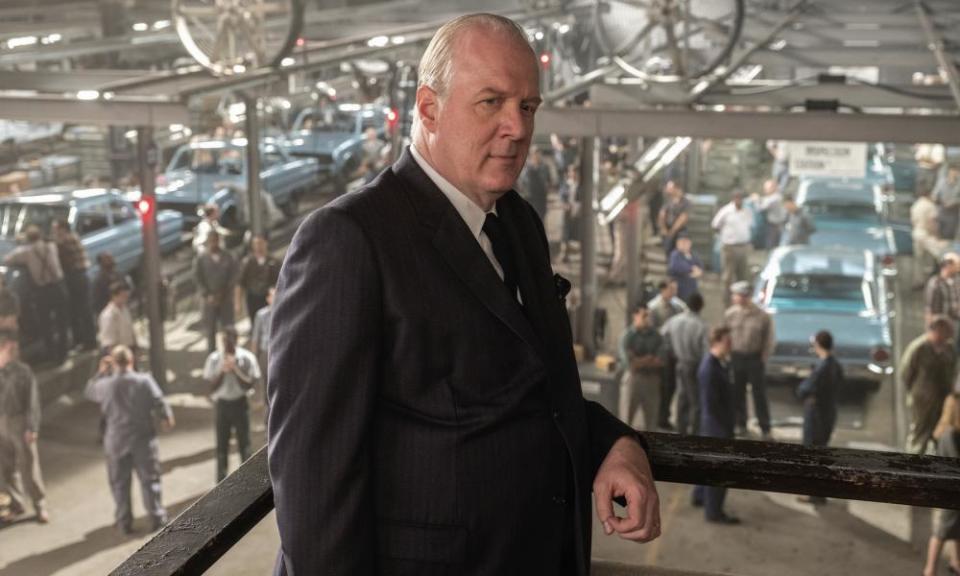
In Ford v Ferrari (AKA Le Mans 66), Carroll Shelby (Matt Damon) has been tasked by the Man in the guise of Henry Ford II (Tracy Letts) to build a racer that can beat those rotten eye-talians who think they are better than us. Shelby can do it, but he needs Letts to get off his back with the rules and regs and let his genius soar! (Ayn Rand would love this movie.) After some comedic business, Ford winds up in the test vehicle alone with Shelby, who zooms him through sphincter-clenching turns at incredible speeds. When he slams the brakes, Ford sobs.
At first you think the scene is just to mock the unmanliness of this pencil-pushing suit. Then it changes. Shelby’s velocity has so rattled Ford’s emotions he explodes in grief that his late father can’t see his name on such a powerhouse, and in deep sadness that he’s not a man of vision himself. He recognizes in Shelby everything he isn’t, and it floods out his eyes and nose. It is a weirdly tender moment, reminding us that even comedic baddies in a dad film are people, too. JH
The strip – Hustlers
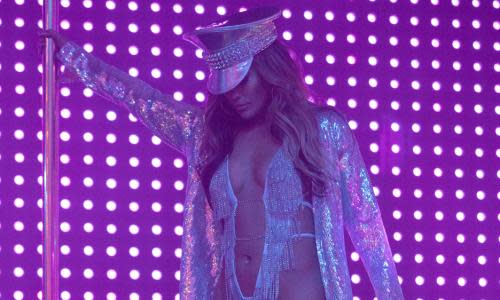
Jennifer Lopez’s dazzling pole dance caused a ripple of gasps around the screening room where I saw Lorene Scafaria’s clever con movie Hustlers. It’s not just that J-Lo looks so great for her, or anyone else’s, age. And it’s not just that the moves required for this dance are so demanding, she later released a YouTube video of the rehearsals in which she gazed horrorstruck at her own bruised thighs. It’s mostly that it’s a very old-school star move: the flaunting of talent, professionalism and charisma that we associate with a routine by say, Fred Astaire. But also, Ramona is the film’s central enigma and this moment, her first appearance, sums up the movie.
Her gymnastic display inspires something more tangible than mere lust: admiration (from an overawed Constance Wu), and financial reward. Ramona hugs those dollar bills close to her heart as she strides off stage. The choice of song, Fiona Apple’s Criminal, is as prophetic as her payoff line is prescient: “Doesn’t money make you horny?” PH
The arrival – Homecoming
A quote from Toni Morrison, some grainy analog establishing shots of the Coachella grounds, and then: it is time. The camera dollies up to a drum majorette who taps out a count, mean-mugs for a moment, and then blows her whistle to summon the demi-deity known as Beyoncé Knowles-Carter. The director of photography’s choreography works in perfect tandem with the dancers’ as one continuous shot pulls forward while they twirl out of the way to reveal Queen B, so resplendent and regal that both the nickname and the crowd’s slavering idol-worship of her instantly make sense.
To the strains of a HBCU-styled marching band, she strides down a catwalk to the stage with one foot in front of the other to maximize the swing of her hips. She might as well be walking on water, so supremely in command of this massive spectacle that she reminds us why we talk about pop stars in religious terms. CB
The evaluator – Marriage Story
As rapturous as the reception might have been for Noah Baumbach’s shattering divorce saga Marriage Story on the festival circuit this fall, no one could have predicted its instant virality earlier this month when it landed on Netflix. But while Adam Driver and Scarlett Johansson’s devastating argument became its most memed moment, it’s the lighter, yet still astute, set piece involving a court-appointed evaluator that made the biggest impression on me.
It’s a perfectly calibrated sequence of awkwardness with Driver’s theatre director Charlie painfully determined to show that he’s a stable parent but knowing, as his soon-to-be-divorced wife says earlier on, that outside observation “on any given day” would reveal flawed parenting. This tension lingers throughout as he tries to bury his instinctive reaction to his son’s gentle insolence while trying, unsuccessfully, to seek some humanity or humour from the unknowable visitor Nancy Katz, played hysterically by the standup comic Martha Katz. I’m not sure if another line has amused me this year quite as much as Charlie’s son asking him to “do the thing with the knife” over dinner in front of an understandably suspect Nancy and silently raging Charlie. Uncomfortably brushing it off, he eventually decides to explain his trick but it goes horribly, stomach-churningly wrong and he ends up bleeding profusely while trying, yet again, to pretend everything is fine. It’s gruesomely, outrageously funny and a reminder of Baumbach’s ability to make drastic yet effortless tonal switches. BL
The karaoke – Booksmart
At a graduation eve party in Booksmart, one of the most criminally underseen movies of the year, shy overachiever Amy (Kaitlyn Dever) sits on the floor in a crowded room, sloshing through the end of her drink and admiring an overconfident theater friend belt out Alanis Morissette’s You Oughta Know on a karaoke mic. Amy, out for two years but inexperienced, spends most of the film careening from confident and brash, in the presence of best friend Molly (Beanie Feldstein), to tongue-tied in front of Ryan (Victoria Ruesga), her crush of two years; when Ryan hands her the mic halfway through the song, the sound cuts out a fever pitch of nerves. But then Amy crushes it, nailing the song’s ending and revealing to her classmates that, low-key, she can sing.
This scene does an impressive amount in about a minute, namely: live out the fantasy that has occupied about 65% of my daydreams since age 13 (I can’t sing), prove that Dever has ARRIVED, salute an ultimate banger of a song. But it also captures the warm invincibility at the bottom of your first drink, the high of leaning into someone else’s confidence or of unlocking that fearlessness in yourself – the type of finely observed, wild yet grounded fun that made Booksmart one of the most resonant high school movies in a long time. AH
The fuckbox - High Life
When Claire Denis’s desolately beautiful science-fiction nightmare High Life premiered at the Toronto film festival, “the fuckbox scene” became a brief but intense meme for the few on film Twitter who had seen it: in a film that was hard to describe and distil as a whole, it was the salacious detail singled out to pique others’ interest. That’s a reductive way to tease a film prickling with so many layers of philosophical and sensual detail, but once seen in context, it’s also an entirely indelible image: Juliette Binoche, nude and scar-torn, entering a space-borne masturbation chamber, straddling a dildo seat and riding it until, as Lil Nas X might say, she can’t no more. Performed with abandon by Binoche and shot with visceral candour by Denis – making a tensing, thrashing map of the actor’s back alone – it’s one of the most extraordinary sex scenes in modern cinema: an expression of female erotic autonomy that outlasts any early quips about it in the memory. GL
The crying – Midsommar
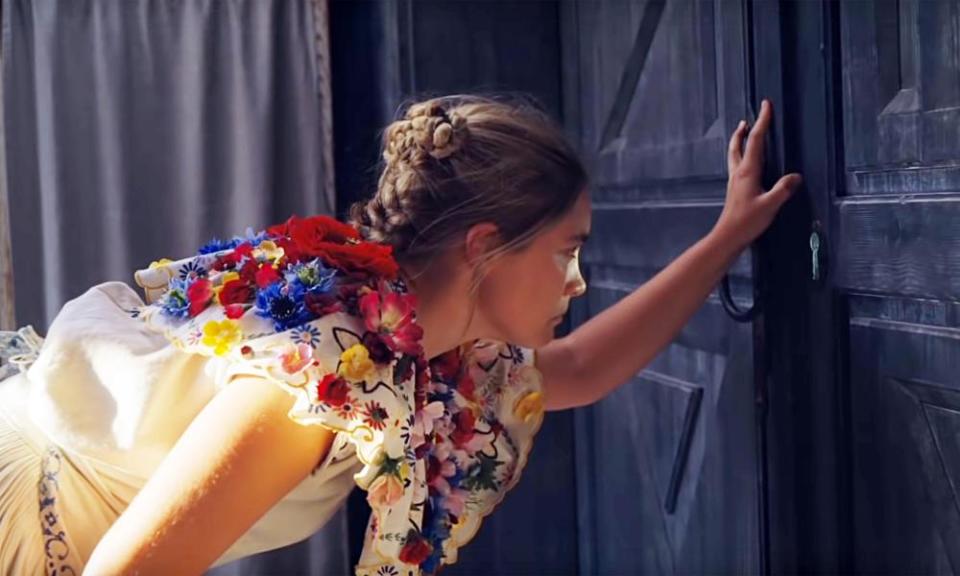
Ari Aster’s Midsommar is a portrait of how a toxic relationship quietly, but surely, unravels. At first it’s subtle: Florence Pugh’s Dani frets that she overburdens boyfriend Christian (Jack Reynor) with her own drama and mental health issues, and that her need for emotional support is unattractive. When her whole family dies suddenly, she’s desperate to hold on to Christian. She appeases. She apologizes. She stifles her cries after Christian and his friends subtly pressure her into taking shrooms, as specters of her dead sister haunt her.
The whole film is about Dani feeling silenced and invalidated by a man who views himself as the saddled victim. That’s why it’s so weirdly refreshing when, in Midsommar’s terrifying climax, the Hårga women embrace Dani for who she is, cupping her face and encouraging her to sob as loudly as she wants. Crouched on the floor, they cry as one, and as their wails reach a communal crescendo, you see Dani finally finding some measure of healing. Sure, it’s a crazy Swedish cult, but there Dani finally finds someone who actually acknowledges her agony. GS
The tai chi - The Farewell
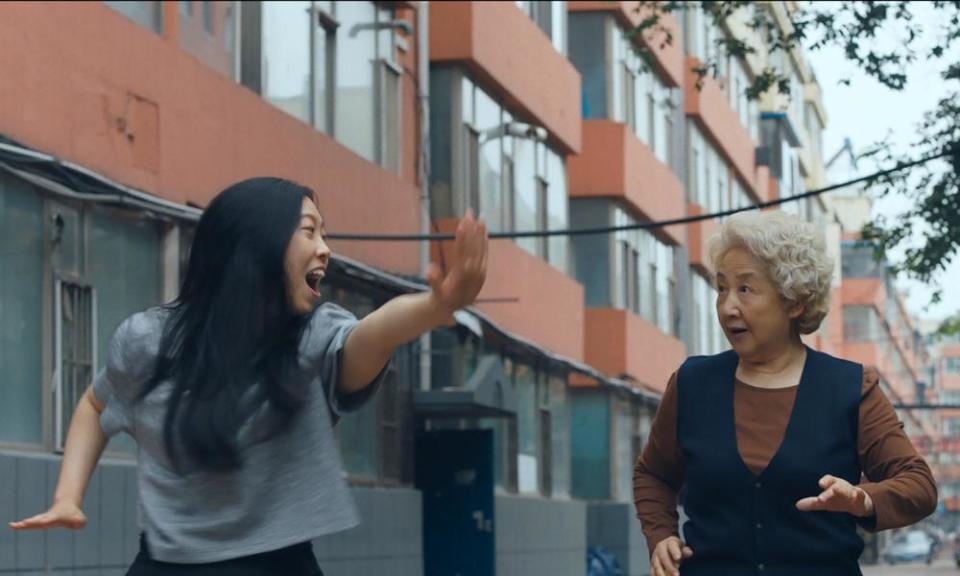
The quiet sentimentality of Lulu Wang’s charming sleeper hit shines brightest for me in a scene where twentysomething Billi (played by Oscar-buzzed Awkwafina) and her grandmother, Nai Nai, practice tai chi outside.
Nai Nai coaches her granddaughter through some of the movements, lightly nagging Billi about practicing tai chi everyday in that cute, but kind of annoying, manner family members are known for. It’s obvious Billi has no plans of practicing tai chi after this scene and doesn’t deem it particularly useful. Then Nai Nai proudly and confidently credits the martial art for her continuing good health, a big smile on her face. Thing is: Billi’s grandmother has terminal lung cancer but does not know it. So Billi performs the tai chi movements with a renewed energy, owed to the strange mixture of guilt, sadness and stress she feels over the secret illness. She pushes out bad energy and inhales good, yelling out an awkward, meek “Hai!”
An hour later, at the end of the film, we see Billi walking down the streets of south Williamsburg. She’s still upset over her grandmother’s cancer and visibly overwhelmed and stressed. Out of nowhere, she stops in the street, takes a deep breath and yells out a loud, reverberating “Hai!” The circularity of the moment – Billi going from disinterest in tai chi to seeking relief through it – highlights how our families can arm us with specific tools to handle the stressors of life. It reminds me of the hours me and my late grandmother would spend putting together 1,000-piece puzzles. As a kid, I was confident I would never take part in such a boring, odious activity as an adult. Today, it’s my favorite pastime. AW
The confrontation – The Souvenir
Generally speaking, scenes in which lovers kiss and make up following an infraction are joyful affairs. They come at the close of a movie, following heart-rending misunderstandings that have left a happy ending in jeopardy. That’s not the case in The Souvenir. After months of casual, incremental borrowing to fund his heroin habit, Anthony (Tom Burke) stages a robbery at the flat of young girlfriend Julie (Honor Swinton Byrne). This is purely to bankroll smack – not the luxe trip to Venice they embark on soon after, which she pays for, and during which she twigs what he’s done.
When they return to London, Julie asks and Anthony admits. But he’s not sorry. He’s wounded she has brought it up – his abhorrent behaviour compounded by this cavalier attitude. You’re shocked, and relieved – surely she’ll give him the boot?
And she quietly forgives him. Anthony’s arrogance and obfuscation, his hurt words about only doing what he needs to, in a world she wouldn’t understand, which he’s protecting her from, fall on appalling open ears. Blame is smoothly shifted. Repentant Julie strokes his foot and forgets her heirlooms.
Joanna Hogg shoots the confrontation in one static shot; the couple sitting opposite in armchairs, until Julie bridges the gap. The viewer knew the truth would out – and assumed it would be a bigger scene. That it’s not moves the relationship into new territory. You can no longer underestimate Anthony’s actions – or his hold over Julie. The moment she reaches out in supplication is the chilling heart of a fairly scary film. CS
The knife fight – John Wick 3
Ignore the whys (the film-makers did); basically, it’s Keanu Reeves versus a bunch of faceless goons in a surprisingly tooled-up antiques shop, and for me, one of the most exhilaratingly gruesome action scenes in recent memory.
It starts with a few gunmen, easily dispatched, but things really kick off when Reeves and an opponent realise they are in a corridor of glass cases packed with all manner of bladed weapons. So much glass-smashing, knife-throwing, shooting, stabbing, punching, kicking, grunting and limb-twisting ensues, you can barely keep track. It is brilliantly choreographed and executed, but what’s so great is how messy it all looks. And painful. Nobody is neatly killed. Knives miss their targets. The deaths get ever-more cartoonishly horrendous. And the scene ends with a flourish: the last, wounded assailant sits groaning in the foreground; from way back down the corridor Reeves hurls a final axe, which, of course, hits its target – in the side of the head. The first time I watched this scene I laughed out loud in horror and admiration, which was kind of awkward as I was sitting on a crowded plane. SR
The heroin – Pain and Glory
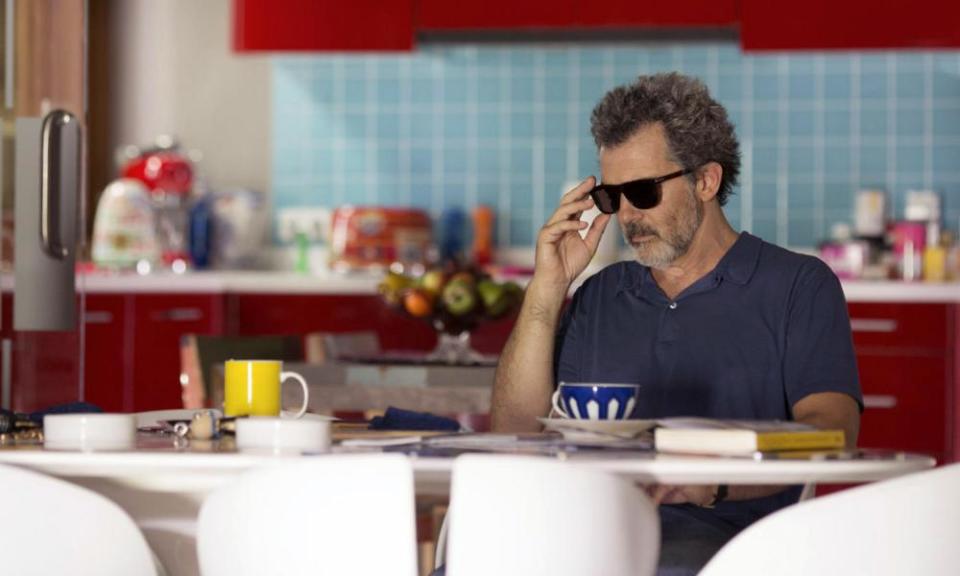
Painfully clean-living as I am, I have never understood why so many films I like feature the consumption of heroin. Christiane F, Trainspotting, The Souvenir, Permanent Midnight – and of course, the champ: Requiem for a Dream. Now we can add another to the list: Pedro Almodóvar’s autobiographical reverie Pain and Glory. Now, most films posit heroin as a one-way ticket to the morgue, or at least to total social dysfunction; for Almodóvar, though, it seems to be the next best thing to an after-dinner mint. His alter ego Salvador (Antonio Banderas) appears to handle it all with remarkable ease, using it to soothe his emotional worries and act as a vehicle for remembrance. Experiencers of the real thing may have a different view, but I presume Almodóvar knows what he’s talking about. It’s quite the eye-opener. AP
The brow mop – Amazing Grace
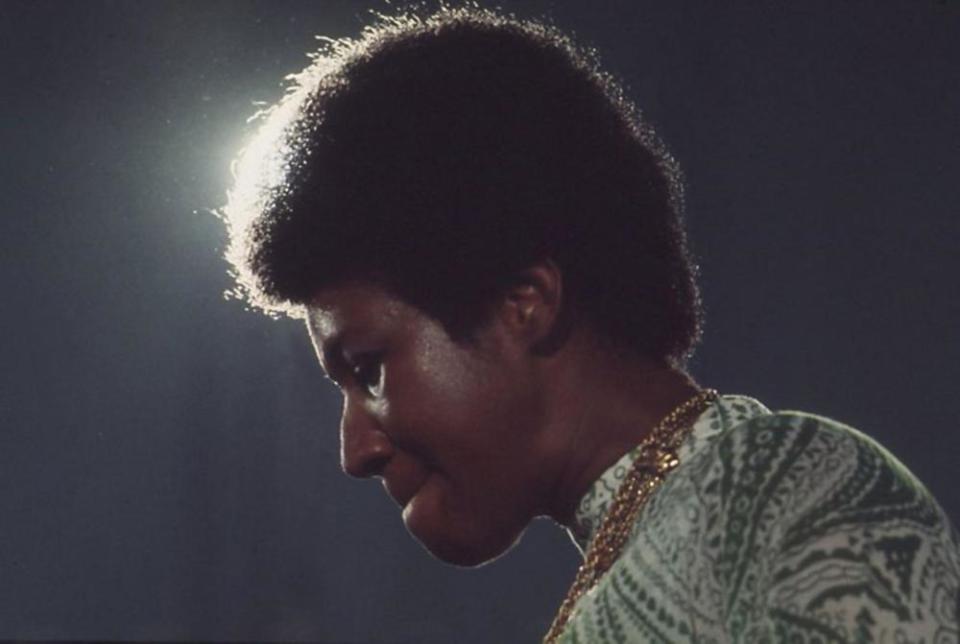
Sydney Pollack’s “lost” concert movie Amazing Grace was finally brought out this year – showing the live filming in 1972 of Aretha Franklin’s gospel album of that name at New Temple Missionary Baptist church in Watts, Los Angeles. Franklin’s calm and restraint at the centre of this boiling cauldron of musical energy is compelling. The most startling moment involves her father, the Rev CL Franklin, who addresses the congregation and then, while Aretha is actually singing, he rushes forward to mop her brow. Was this the sort of thing he used to do when she was a little girl? Is it touching that he does it now? Or weirdly dysfunctional and coercive? Either way, it is a compelling image in a remarkable film. PB

